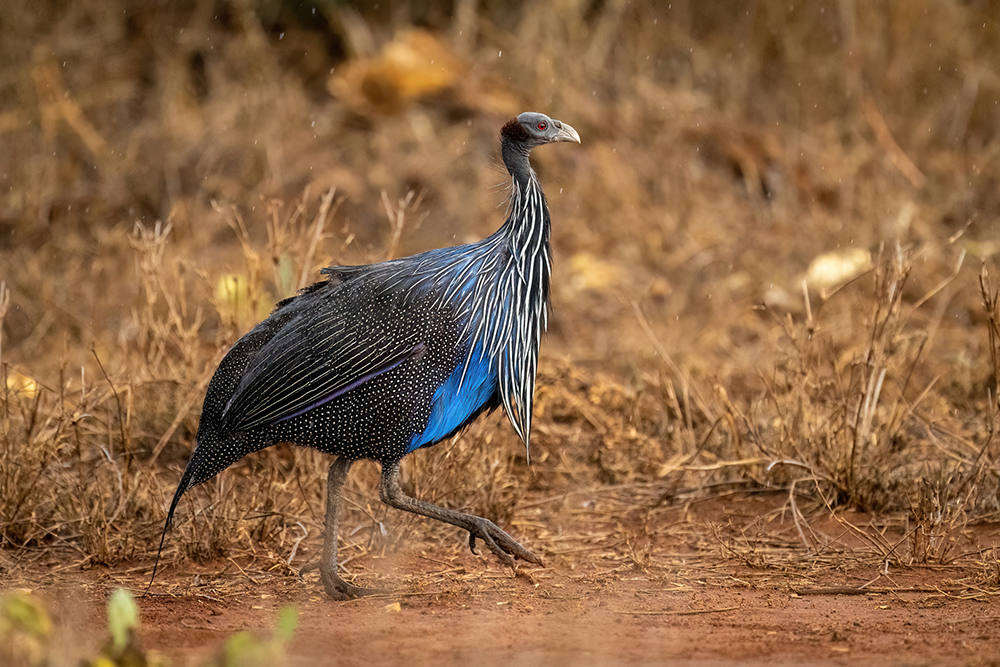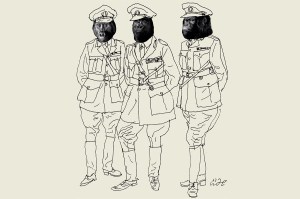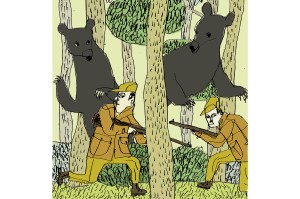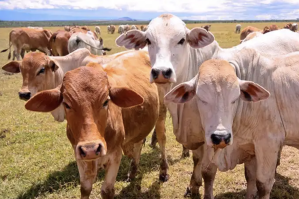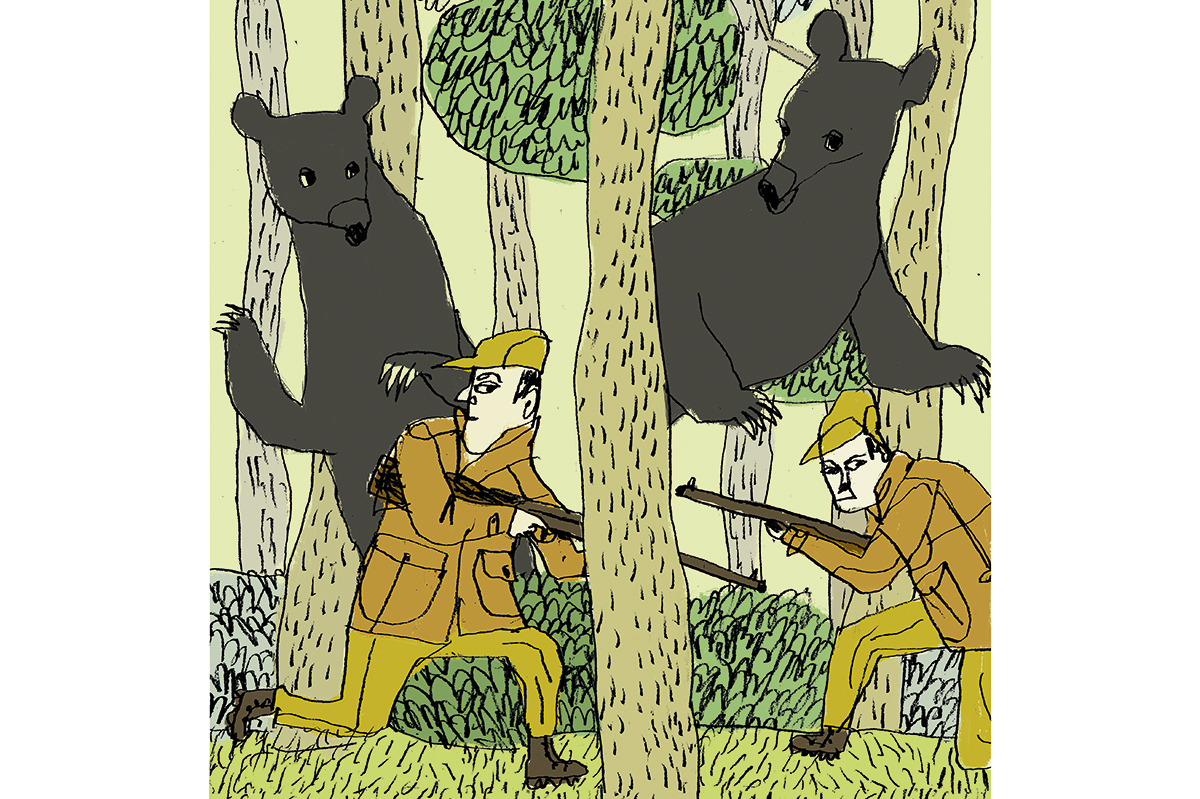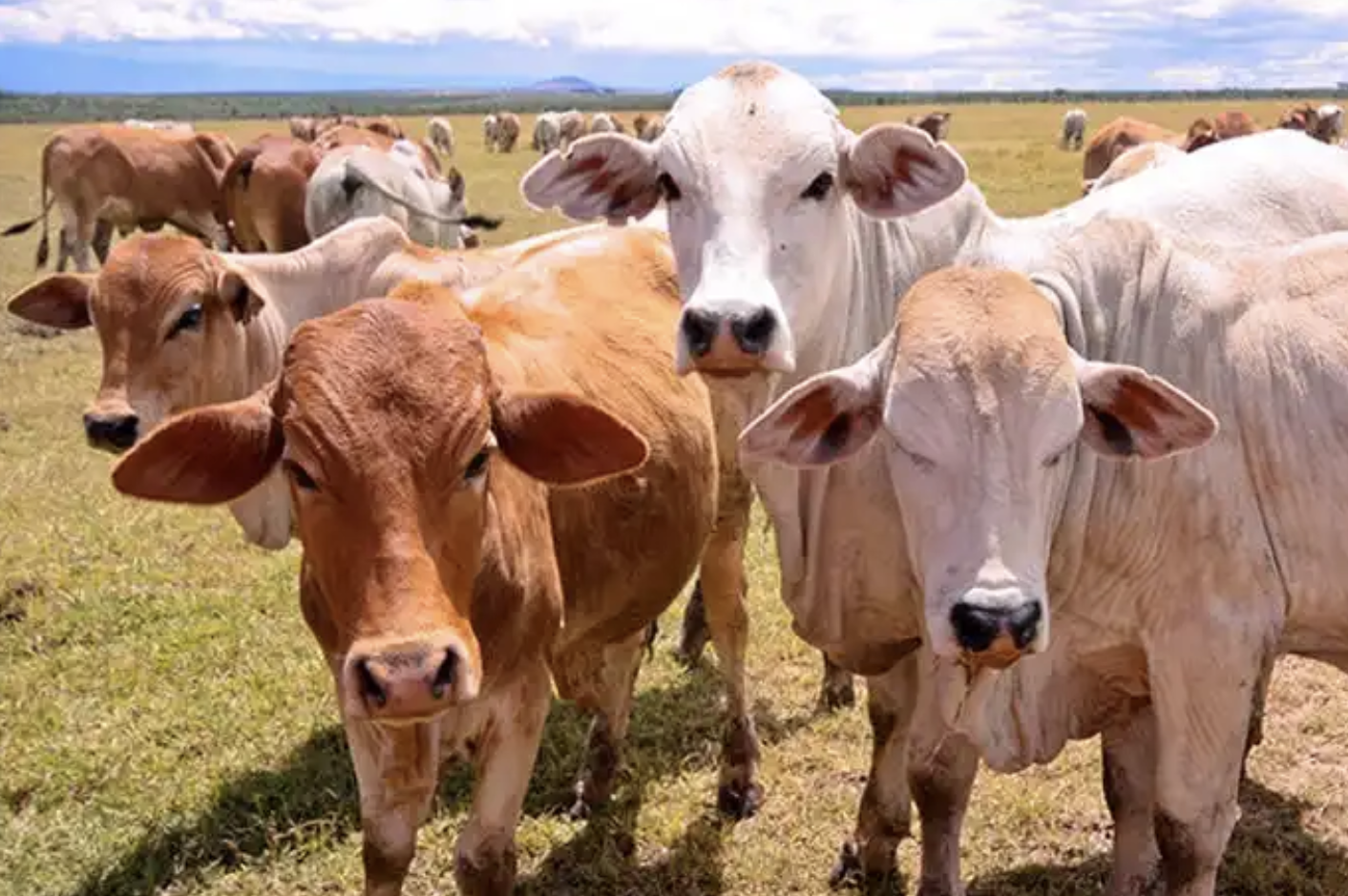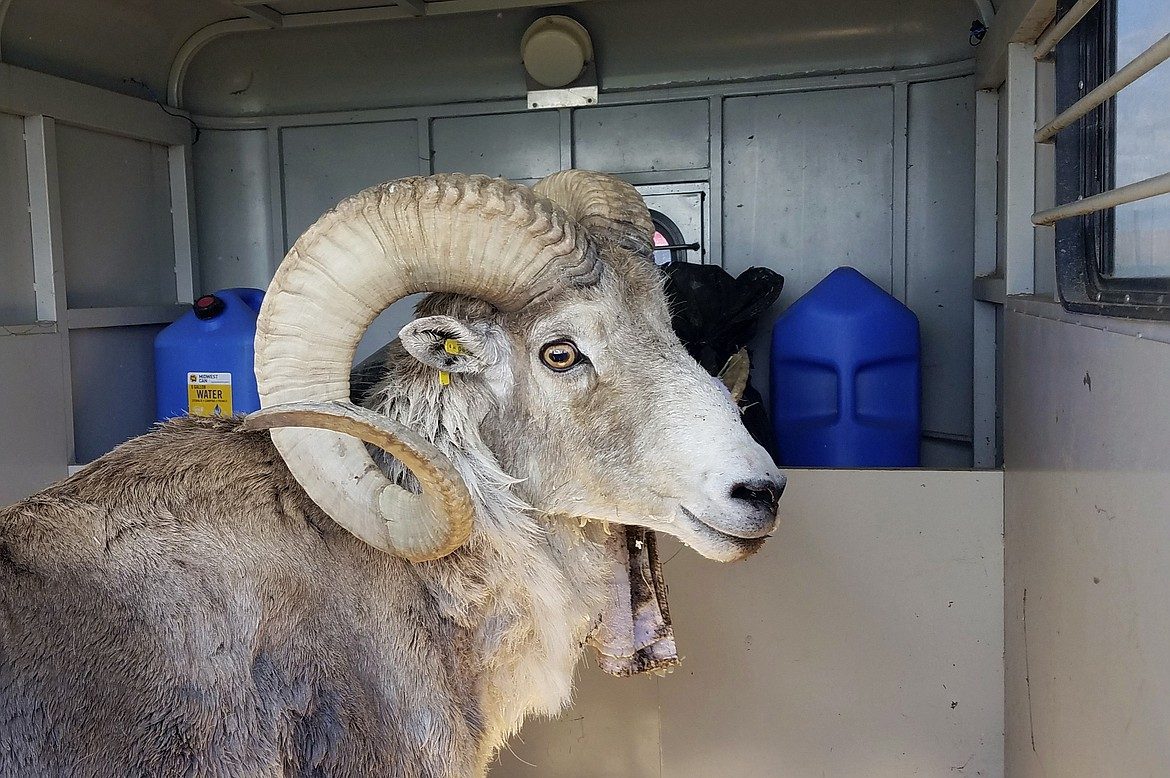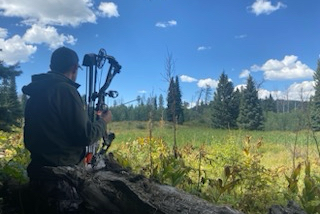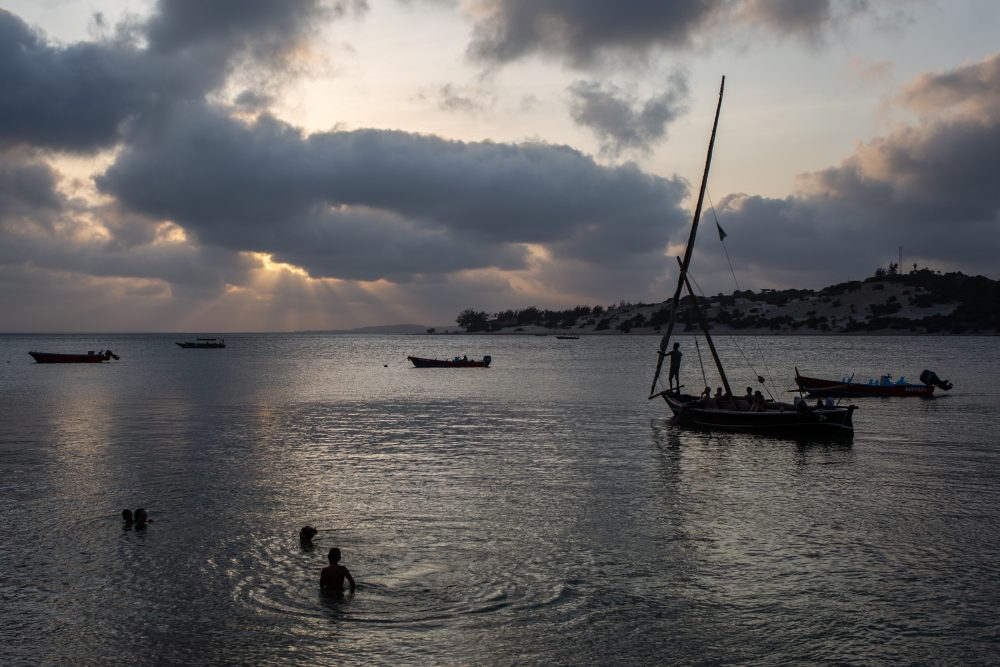Laikipia, Kenya
When I was eight I used to go fishing in the Indian Ocean beyond Vasco da Gama’s pillar with Mohamed. Once we pulled out a fish with a domed forehead and a sailfin – a filusi. In Spanish it’s known as the dorado, referring to its iridescent golden flanks. As we watched the fish suffocate in the tropical air, its pigment, sheathed with a patina of stippled green, was transfigured for a brief instant like a beam of sunshine on a church mosaic. Then the dorado’s brilliance faded, and by the time Mohamed picked up his knife and sliced open her belly, removed the guts and tossed the body to the bottom of the canoe, it had turned to tarnished lead.
As a boy, my hunter’s remorse was as strong as my urge to kill. Once we trapped a mole-rat and, entranced by the perfection of its fur, I kept it in my coat pocket until my mother found it, stinking, days later. My bedroom was filled with stuff like a dead mud skipper, or a smelly cowrie, a sea urchin, a fox’s brush in meths, a bottled dung beetle or a snake’s sloughed skin. In these unfortunate creatures, I suppose I hoped to apprehend the very thing that I saw fade away, what Larkin calls the “million-petalled flower” of life.
Since then I’ve enjoyed my share of bloodlust, hunting animals, shooting countless birds and landing many fish. I recoil at the memory of slaughtering sand grouse, those magical creatures that wheel out of the desert to fill their fluffed feathers with water to fly back to their waiting chicks. When I see a flock of vulturine guinea fowl, I’ll still raise a phantom shotgun to my shoulder and whisper “Boom boom,” but these days I am disarmed by their cobalt feathers and rufus napes. Recently, while working in South Sudan, I spent most of the morning watching a pair of eastern gray plantain-eaters flopping around in the branches of a neem tree, calling, in the words of my bird book, “with loud, querulous and nasal notes which build up into a maniacal laughter.” What a wonderful skill, to capture the sound of a bird’s song in words.
The joy of those plantain-eaters convinced me to sign up for a residential birding course with a renowned Kenyan ornithologist, starting next month. Richard Meinertz-hagen, the ornithologist, stealer of bird specimens and expert on parasitic avian lice, said that the best way to identify a creature was to shoot it. “Out shooting again, Mr. Meinertzhagen?” said an annoying lady to him at a Nairobi dinner. “Bang bang bang?” “No,” Meinertzhagen said, “Just bang.”
But I’ve almost lost my wish to kill.
All these bird species are interesting partly because their personalities can be compared to certain types of human
Before, I always told myself I was too busy to learn my birds properly, which seems a pity, given that around 350 species supposedly live around my Laikipia plateau home. Once, during a battle in Mogadishu, I saw a hoopoe with its crest raised and strutting about as Cobra gunships laid down heavy fire and militias scattered. “I have come to know things about which you know nothing,” the hoopoe tells wise Solomon, bringing news of Queen Sheba, but I turned my eyes away and back to the noisy world. In Rwanda, when I raised my gaze from the piles of stinking corpses, I used to catch glimpses of magnificent turacos. If only I had sat down to learn that the turaco is nature’s only truly blue and green bird, its feathers containing a pigment called turacoverdin – since all other birds only seem blue, because of the way the light refracts in their feathers, a phenomenon similar to the way that the sky seems blue. Had I known that turacos and some owls fluoresce bright red under ultraviolet light – visible to birds but not to us humans – what riches I might have acquired in central Africa’s killing fields, instead of nightmares!
Just on the farm, we have ostriches that run twice as fast as Usain Bolt, parrots which can live longer than humans, the largest bird that can fly – a Kori bustard – and hornbills that imprison their broody mates in tree holes until their eggs hatch. We have secretary birds which trample snakes with their thick-soled feet before swallowing them whole, widow birds – with tails like Amy Winehouse’s hair – which leap vertically out of the long grass to impress their mates, and vultures that will absolutely circle over you hungrily if you lie down for a nap on the plains. Naturally, all these bird species are interesting partly because their personalities can be compared to certain types of human. I look forward to describing how marabou storks and invasive crows are like some particularly unpleasant characters I know, while scintillating sunbirds and fluffy goslings remind me of people that I like and love.



